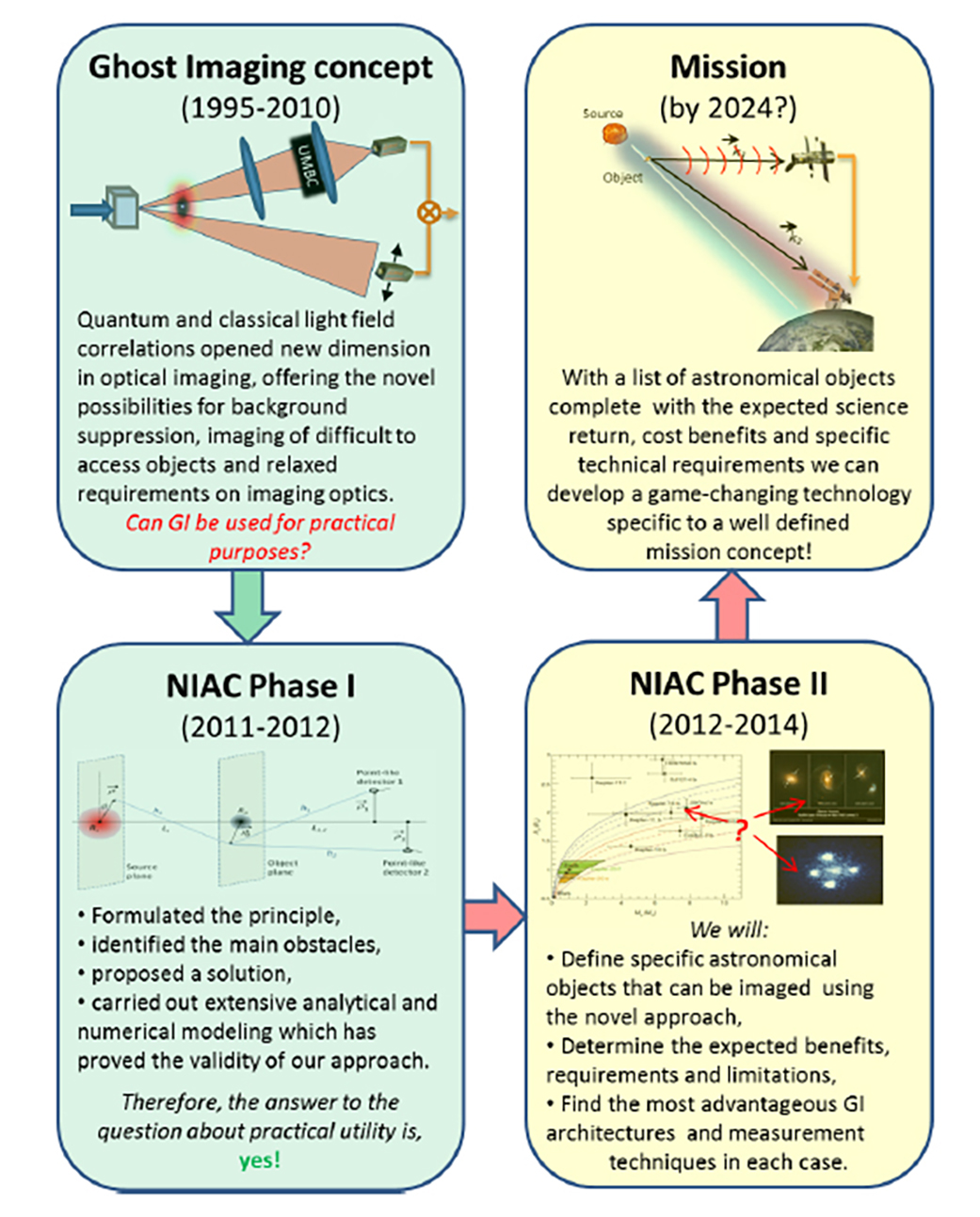Dmitry Strekalov
NASA Jet Propulsion Laboratory
NIAC 2012 Phase II Strekalov Ghost Imaging of Space Objects Final Report
Description
The NIAC research effort entitled “The Ghost Imaging of Space Objects” has been inspired by the original 1995 Ghost Imaging and Ghost Diffraction experiments that harnessed quantum-correlated photons to recover an object’s image from a measurement lacking spatial resolution, but utilizing an empty reference channel. Various applications of this phenomenon have been soon proposed, ranging from the optical imaging exceeding the classical resolution limit (Rayleigh limit), to the ultimately secure quantum communications and super-dense signal encoding. It was also realized, around 2004-5, that not only quantum-correlated but even a common thermal source of light can be used for the Ghost Imaging, although at a cost of a reduced contrast. Since then, the possibility of ghost-imaging of space objects has been intriguing many physicists. Unfortunately, the need for an optical beam splitter to be placed between the thermal light source (e.g., a star), the object and the observer severely diminished the practical value of this idea.
Our contribution to this field, is the approach that would allow us to dispense with such a beam splitter, transferring its function to the object itself. Then we essentially arrive to an advanced version of the famous Hanbury Brown Twiss intensity interferometer. In our implementation, however, the accent is made not on the measurement of the star angular size but on the effect of a dark object present in one or both arms of the interferometer.
Our Phase I commenced in September 2011. It was dedicated to the study of the underlying physical concept and developing of an analytical model. This model has allowed us to investigate and understand various observations techniques and scenarios. We have investigated different objects’ signatures in the correlation functions measured with a thermal source. This study has been carried out analytically as well as numerically for both lab-scale and astronomical-scale objects combining absorptive and refractive properties.
Our preliminary results indicate that some of the studied approaches are potentially highly promising, and may enable future NASA missions. Therefore we propose to carry out the follow-on research that would assess such missions’ feasibility, requirements, and potential benefits in scientific output and cost savings. This research will be carried in the Phase II along the lines of the task plan proposed below. Our recommendations for development of the future missions enabled by our research will conclude the Phase II.































